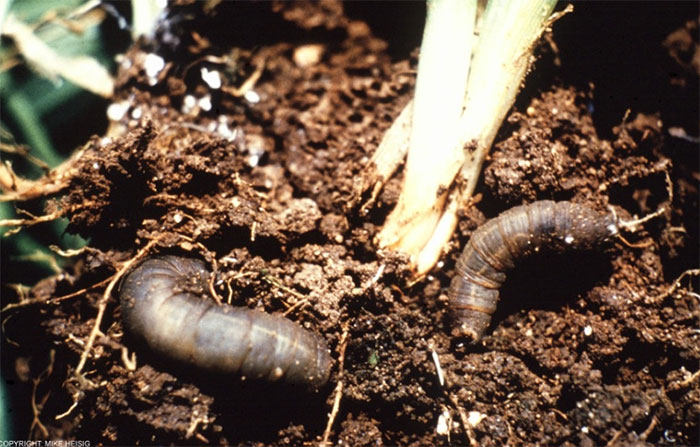
Exceptional numbers of leatherjackets in crops this winter will cause significant damage to yields if left unchecked, warns leading agronomy firm Hutchinsons.
Milder than normal autumn weather has allowed the pest to thrive in both arable and grassland rotations across much of Scotland and northern England, with populations of up to 4-6m/ha reported in some West Coast areas – around ten-times the recommended treatment threshold.
“I’m checking fields daily and finding unprecedented numbers everywhere I look, even on long-term arable land,” says the firm’s Ayrshire-based agronomist Cameron Ferguson.
Not only are numbers high, but larvae have grown bigger than usual for this time of year – up to 25mm in length - and are therefore eating more, causing greater damage to roots and underground stems in the process, he says.
“If it stays mild through the winter, the damage to crops will be huge. Even if conditions turn cold from now on the larvae will simply move down the soil profile and re-emerge to feed when conditions warm up. It’s crucial that growers are aware of the huge numbers out there with potential to cause big problems in the spring.”
Any growers with crops at risk and still able to travel on land should treat with chlorpyrifos as a matter of urgency, Mr Ferguson advises. “Leatherjackets are still close to the surface, so anyone who has been able to spray recently has achieved excellent control.”
The longer control is left, the more damage leatherjackets can do and the lower the response to treatment, adds Hutchinsons technical support manager Duncan Connabeer.
This is illustrated by Department of Agriculture Northern Ireland trials which showed that early treatment delivered more than twice the dry matter yield benefit compared with waiting until the spring (see table). “At very high leatherjacket levels the response may be even greater. An extra tonne of dry matter ensiled is worth around £113,” he says.
“If you think you have a leatherjacket problem you really need to spray crops this side of Christmas. But only do so if conditions allow and ideally soil temperatures should be above 5-degrees Celsius for chlorpyrifos to be effective, as leatherjackets move deeper in colder soils.”
He urges growers not to spray if ground is frozen or waterlogged and to make sure they follow the chlorpyrifos stewardship “Say No to Drift” guidelines (see below).
Dow AgroSciences advises growers to use risk assessments to help decide whether spraying is necessary and to treat cereals when numbers exceed the threshold of 0.3 to 0.5 million leatherjackets per hectare, which is equivalent to 30-50 leatherjackets per metre squared. In pasture the threshold is higher at 100/m².
“For now at least, there’s adequate soil moisture to help chlorpyrifos work effectively and temperatures are still high enough for leatherjackets to be active near the surface, so the sooner you can spray, the better,” Mr Connabeer says.
“If we get a prolonged cold period, they will be less active, but will still be there waiting to emerge when temperatures rise, so you need to be ready to go in the spring if earlier treatment isn’t possible.”
Spring rolling of affected fields may be a useful addition to any leatherjacket control strategy as it restricts their movement within the soil profile and suppresses activity, he notes. It can also have useful benefits in encouraging tillering and correcting structural damage caused by frost heave over winter.
